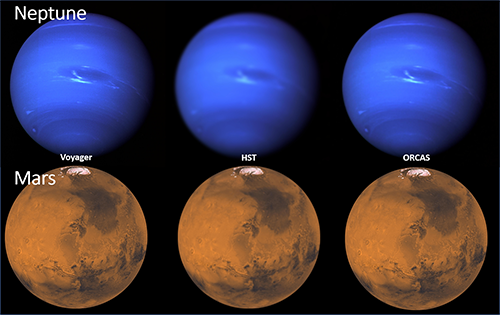Solar System
ORCAS provides two key capabilities for Solar System research: performing AO observations on extended sources, and on faint and diffuse objects (e.g., comets, distant TNOs, small near-earth-objects NEOs/asteroids). AO observations of giant planets in our Solar System, like Jupiter and Saturn, are currently only possible when employing bright near-by satellites as tip-tilt/DM references, and even then is particularly challenging and particular coordination is required. AO observations on many planets in our Solar System (e.g., Mars, Venus, Mercury) have been tried unsuccessfully, since these extended objects do not provide an accurate correction reference frame.

Science Objectives:
Understand the origins and evolution of small bodies, investigate Satellites, rings, Mars, moons, and ice giants.
Observable and Measurements:
Determine surface properties and architecture of small bodies. Determine the volatile composition of small bodies in the outer solar system. Understand the processes involved in the formation of our Solar System, and map clouds and trace gases of Uranus and Neptune.
Key Functional Requirements:
A NIR imaging spectrometer with a wavelength coverage of 2.5 to 5.0 µm, spectral resolution ≥ 20,000 and pixel scale ≤ 50 mas.
ORCAS Uniqueness:
ORCAS will have the potential to resolve rings and binaries that have not yet been achieved with direct imaging. The unprecedented resolution can help determine heterogous composition of icy bodies. Bright extended objects are not possible with current AO, unless a star or satellite is within 30".
